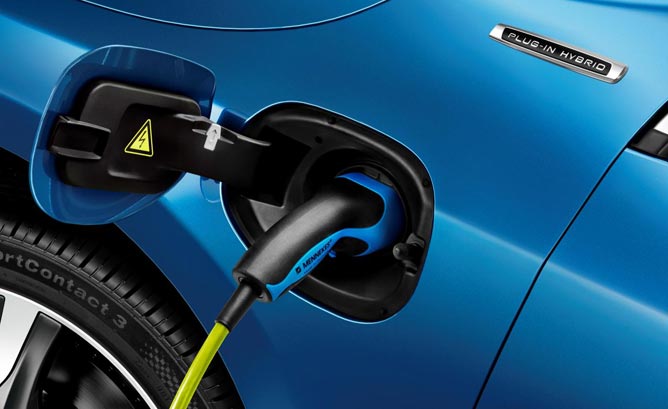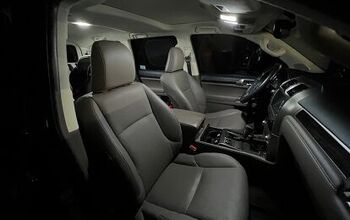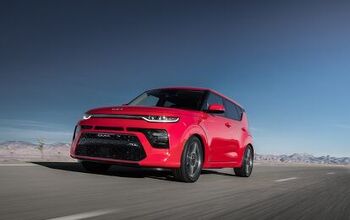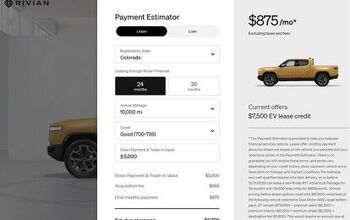5 Cool Things About Plug-in Hybrids Many People Don't Think About
Some people have had a hard time getting their minds wrapped around the notion of plug-in hybrids, but one way to think of them is like a hybrid on steroids.
A non-plug-in hybrid, such as a Toyota Prius, always needs gas and its electric motor drive is only a part-time helper. A plug-in hybrid however is a hybrid with a larger battery enabling a certain distance of pure electric driving.
Put another way: A plug-in hybrid electric vehicle (PHEV) is a part-time EV, part-time hybrid. The EV aspect depends on the plug-in hybrid’s all-electric range which is a function of battery size in kilowatt-hours.
While EPA-rated electric range can be as low as 11 miles (for the 2012-2015 Prius PHV) to as high as 53 miles (for the 2016/17 extended-range electric Chevy Volt) – or 72 miles for the extended-range EV i3 REx – those gas-free miles add up to significant environmental and fuel savings.
Today there are a dozens of plug-in hybrids for sale in the U.S., and more are pending as automakers the world over have said they’ll be introducing PHEVs to help them meet mpg and CO2 regulations.
While not a comprehensive list, following are five advantages a majority of U.S. consumers might not normally think much about.
No Electrician Needed
Some have the idea that plug-in cars need special home charging equipment installed but this is not so with plug-in hybrids.
Unlike pure EVs which have larger batteries, PHEVs can make do with a standard-issue 120-volt U.S. household outlet. They even come with their own special cord and charging apparatus (EVSE).
Of course a 240-volt EVSE can be used, and does speed charging, but even the biggest 18.4-kWh battery in the 2016/17 Chevy Volt can be charged overnight at 120V.
Convenience
A plug-in hybrid runs on gas or electricity. Yes, you do need to charge its battery as mentioned – typically at home, if not also during the day, or en route – but if you do not, the gas engine will move the car just fine in normal hybrid mode.
According to advocate Mark Renburke, of Drive Electric Cars New England, PHEVs are great because drivers do not have to wait for the vehicle to charge, as they would with a battery electric vehicle. They are not tethered to electricity but have flexibility to use it and work their schedule around it on their own terms.
On longer trips, one does not need to carefully plan out their route around charging stations; although this is becoming less of an issue. But it does mean the PHEV can be like a pure EV day to day, and your one and only car that works when you want to travel farther.
100-Percent Battery Usage
All battery electric cars, even Teslas, are limited in how much battery range they may use, and a “buffer” must be kept to get you to your next charge point.
That is, if you have 106 miles range with a pure EV, can you use all 106 miles? Not unless a tow truck driver is your friend.
This is not the case with PHEVs which may use 100 percent of their usable energy every time without fear of being stranded. Cars like the Chevy Volt have actually been shown to accomplish more daily EV miles than pure EVs like the 84-mile 2013-2015 Nissan Leaf.
Some more inexpensive battery electric cars with 200-plus mile range like the Chevy Bolt, next Nissan Leaf, and Tesla Model 3 stand to shift this advantage to some degree, but zero range anxiety for PHEVs while using the battery to the max is still considered a plus.
Satisfying Drive Experience
PHEVs drive and handle like normal cars with good torque off the line thanks to their electric motors. In EV mode they are as quiet as pure EVs as they are essentially operating just the same with the gas engine off.
Some have said they are a gateway to EVs because the smooth drive can be addicting. At least true is they give more of the electric drive experience than a regular hybrid can. Hybrids may also be somewhat quiet, but harder acceleration with the gas engine does not make music to the ears of many a car enthusiast.
If hybrids are a “bridge” technology on the way to pure electric cars, PHEVs are further along as a bridge offering more of the EV experience without some of the drawbacks.
Obviously it is a trade-off of pros and cons, but many people who’ve actually bought PHEVs do appreciate the compromise of electric when wanted, gas when needed.
Subsidy Eligible
Think: Free money! Or sort of, as the case may be. At least true is just as the case for EVs also, it’s a good time to consider a PHEV as subsidies and incentives are being offered to foster sales and begin the market.
These include the federal government’s one-time tax credit offer from $2,500-$7,500 depending on battery size – the larger the battery, the more the credit. And, states also on a case-by-case basis also may offer incentives as well.
PHEVs do tend to cost more than regular hybrids but depending on your energy costs – if not using on-site solar or other renewable energy which is a natural fit – the total value equation can work out.
Become an AutoGuide insider. Get the latest from the automotive world first by subscribing to our newsletter here.
Recent Updates:
November 10th, 2012 – updated text for accuracy and current specifications.
More by AutoGuide.com Staff





































Comments
Join the conversation
Heres what I dont understand about EVs and Hybrids. The big negative to EVs is that you rely on coal burning electricity production to power your car. Theres no way our power infrastructure can deal with that if all cars were purely electric, right ? Then why isnt the non plug in hybrid the better solution? The gas motor recharges the battery so you dont burden the grid and your gas consumption is very low. That seems to make more sense unless youre hell bent on eliminating any gas consumption at all which is rather unreasonable, no?
You don't rely out coal burning electricity production. Coal use in electric generation has plummeted as cleaner sources have grown. For my house, 100% comes from solar, hydro and biomass. Coal use for electricity generation may disappear inside 10 years.